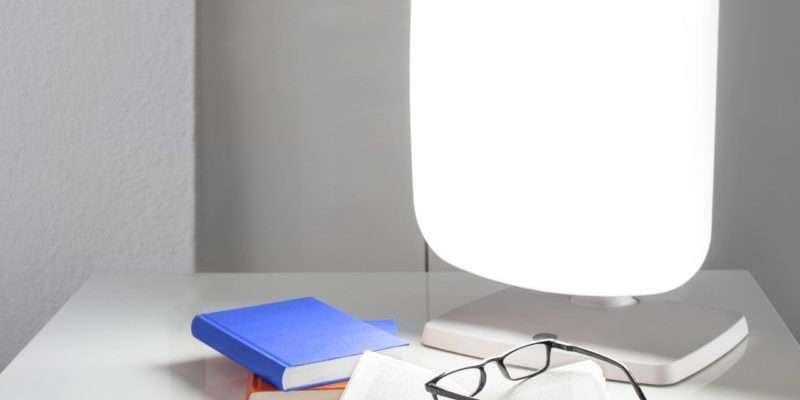Do you feel a bit gloomy lately? Well, the weather doesn’t seem to help either, does it? “Winter blues”, “being under the weather”, “rain on my parade” — all these phrases have a scientific truth in them. See how the weather affects your body clock and how you can reset it.
What is SAD?
Seasonal Affective Disorder (SAD) is a type of seasonal depression usually connected to the passing from the brighter to the darker months. It’s also known as “the winter blues”, as it affects people mainly through the winter months. Some of the most common symptoms are: having trouble waking up or concentrating, low energy, loss of enjoyment in normal everyday activities and more.
Do SAD lamps work?
Light Therapy is listed among others as a treatment method for SAD by both the NHS and Mind. While there is not yet enough evidence that proves it, some people find it can help improve their mood considerably — a fact that makes identifying why it works for some and not others an interesting topic for future research. Even though the results it brings are short-term — meaning that the symptoms will likely come back if the treatment isn’t repeated next year — most people feel relief as quickly as in the first one or two weeks.
How do SAD lamps work?
SAD seems linked to reduced sunlight exposure during the shorter days in winter and autumn. Normally, sunlight stimulates the hypothalamus, a part of the brain responsible for properly regulating your body clock. In this case, though, the lack of sunlight confuses the hypothalamus, producing too much of the sleep hormone, melatonin, and not enough serotonin, which affects mood, appetite and sleep.
So, what does a SAD lamp do? Providing very intense light, it simulates the sunlight that’s missing during the darker months to help the hypothalamus do its work.
How to use a SAD lamp?
How to get the best out of your SAD bulb? Here are some tips:
- Where to put it: Depending on the light intensity, put the lamp about 30-50 cm away from you. Its light needs to fall on your face, but make sure to avoid looking directly at it. Remember that you should keep your eyes open. You can watch TV, work or enjoy your morning coffee while you do so.
- When to use it: The best time to get some light in is in the morning, ideally before 10 a.m. but avoid it after 5 p.m. Repeat daily, including weekends, until the brighter months come. Also, try to keep a regular sleep schedule.
- How long to have it on: The usual dose of light suggested is 1 hour of 5,000 lux (lx) daily, which, means 30 minutes for a 10,000 lux lamp, and 2 hours for a 2,500 lux one. Feel free to break this into shorter periods. For comparison, a 100W lamp (or LED/CFL equivalent) will produce 3,000 lux at a distance of 20cm. (One lux is equal to one lumen per square metre: 1 lx = 1 lm/m2)
- What to look out for: Headaches, irritability, or blurred vision might be some of the side effects at the beginning.
Wattage/Lumens to Lux Conversion Table
| Wattage | Lumens | Lux @ 10cm | Lux @ 20cm | Lux @ 30cm | Lux @ 50cm |
|---|---|---|---|---|---|
| 75W | 1055lm | 8395lx | 2099lx | 933lx | 336lx |
| 100W | 1521lm | 12104lx | 3026lx | 1345lx | 484lx |
| 150W | 2452lm | 19512lx | 4878lx | 2168lx | 780lx |
| 200W | 3452lm | 27470lx | 6868lx | 3052lx | 1099lx |
Which SAD lamp to buy?
Here’s a checklist to help you make your pick:
- Is it suitable for SAD? First, check if the product is properly produced to treat SAD.
- Is it the right treatment for me? It’s a good idea to check with your GP before buying a SAD light. Even though it’s safe for most people there are some cases of eye conditions, psychosis, and medication that makes the skin sensitive to the light, where it should be avoided.
- Which lamp would best match my lifestyle? Think of where you spend most of your time in the morning when you’re at home.
- Is it having breakfast in the living room, grabbing a coffee and sitting on the couch? If that sounds like you, it can be as simple as replacing your old lamps on your ceiling lights with SAD Daylight lamps. Or is it sitting at your desk working from home? Then a SAD desk lamp would work better for you. See which bulb fits in your desk lamp here.
Are you an early bird, getting all the chores out of the way first thing? Then some dimmable led SAD lights around the house would be more useful. Or are you one of those who prefer waking up when the first light comes in from the window. If so, turning on some remotely dimmable Daylight LEDS the minute your alarm clock rings would be the best for you.
- Put it to the test: Try it within the return policy period and see if the whole procedure works for you.



